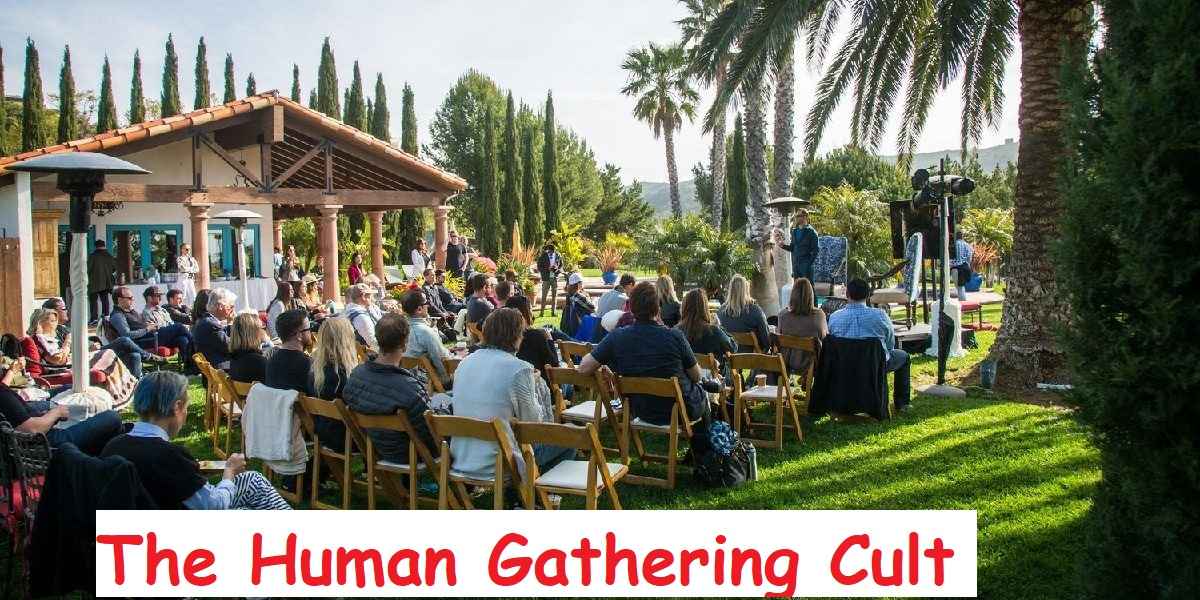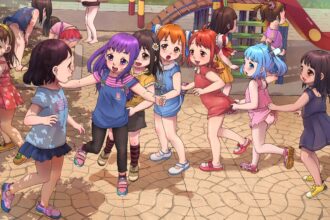Introduction to the Human Gathering Cult
The Human Gathering Cult. It sounds almost mystical, doesn’t it? A phrase that conjures images of secret meetings and passionate devotion. But what is this cult all about? In a world increasingly defined by technology and isolation, the allure of gathering around shared beliefs has become more powerful than ever. While some may dismiss such groups as fringe or eccentric, they reveal deeper sociocultural currents at play in our societies.
This blog post takes you on an intriguing journey into the heart of the Human Gathering Cult—a phenomenon that transcends borders and cultures. From its historical roots to contemporary practices, we’ll explore why these gatherings form and what drives individuals to join them. Whether you’re curious about their beliefs or concerned about their societal impact, there’s much to uncover here. So grab a seat—it’s going to be an enlightening ride!
The History and Evolution of the Cult
The Human Gathering Cult has roots that stretch back centuries. Early forms emerged in small communities where individuals sought belonging and purpose. These gatherings often revolved around shared rituals or beliefs, creating a sense of unity.
As time progressed, the cult evolved dramatically. The Industrial Revolution played a crucial role in its growth. Urbanization led to isolation among individuals, prompting many to seek connections through collective experiences.
Modern iterations of the cult have adapted to cultural shifts and technological advances. Social media now facilitates virtual gatherings, drawing people into new spaces of connection. This evolution showcases humanity’s enduring need for community.
Throughout history, these movements have taken on various shapes—some benign and others more concerning. Understanding this trajectory helps illuminate why such groups resonate with so many today. The Human Gathering Cult Their adaptability reflects broader societal changes while maintaining core themes of togetherness and identity.
Beliefs and Practices of the Cult
The Human Gathering Cult is defined by its unique set of beliefs that focus on community and connection. Members often view themselves as part of a larger collective, transcending individual identities.
Ritual gatherings form the backbone of their practices. These events are not merely social; they serve to reinforce shared values and deepen emotional bonds among participants.
Many adherents engage in activities like communal meals or storytelling sessions, fostering an environment where personal experiences contribute to the group’s narrative.
Spirituality plays a significant role too. The Human Gathering Cult Many believe in an interconnected energy that flows through all living beings, guiding them toward higher consciousness.
Additionally, some groups incorporate elements from various spiritual traditions—meditation techniques or nature-based rituals—to enhance their experiences during gatherings. This fusion creates a rich tapestry of beliefs that resonates deeply with members’ desires for belonging and understanding.
Sociocultural Factors that Contribute to its Existence
Several sociocultural factors fuel the existence of the human gathering cult. Rapid globalization often leads to a sense of disconnection. People seek belonging in groups that promise community and support.
Additionally, societal pressures can leave individuals feeling isolated. In an age dominated by technology, many crave authentic human interaction. This need drives them toward gatherings that celebrate shared beliefs or experiences.
Cultural narratives also play a role. Many societies value collective identity over individualism, making such gatherings seem appealing. They offer rituals and traditions that reinforce social bonds.
Furthermore, economic instability can lead individuals to search for security in close-knit communities. When traditional structures falter, people turn to alternative forms of organization for stability and guidance.
These factors create fertile ground for the emergence of such cults, drawing in those seeking connection amid modern life’s complexities.
Examples of Human Gathering Cults in Different Societies
Across the globe, various The Human Gathering Cult manifest in unique forms. In Japan, groups like Aum Shinrikyo initially began as a spiritual movement but evolved into a controversial cult with dangerous ideologies that captured public concern.
In the United States, movements such as The Twelve Tribes promote communal living and strict adherence to their interpretation of Biblical teachings. They emphasize shared resources while often isolating themselves from mainstream society.
In Africa, certain tribes practice age-old rituals that may echo elements of contemporary cult dynamics. These gatherings foster unity yet can also lead to exclusionary practices against outsiders.
Meanwhile, in South America, some indigenous communities draw on ancestral beliefs to form cohesive groups centered around spirituality and nature worship. Their gatherings are rich in cultural significance but sometimes lead outsiders to misinterpret their intentions or structure.
Impact on Members and Society as a Whole
The human gathering cult exerts a profound impact on its members. Individuals often find a sense of belonging that transcends traditional social structures. This connection can foster personal growth, but it may also lead to dependency on the group.
For society at large, these cults can create ripples both positive and negative. On one hand, they might encourage community service and collective action in local areas. Conversely, the insular nature of such groups can breed division or distrust among broader societal factions.
Mental health implications are significant as well. Members may experience heightened anxiety when challenged by outside perspectives. This isolation reinforces their commitment to the cult’s beliefs while distancing them from diverse viewpoints.
Additionally, families of members often feel the strain caused by this separation. Relationships suffer as individuals prioritize allegiance to the cult over familial ties or friendships.
Controversies and Criticisms Surrounding the Cult
The Human Gathering Cult has faced numerous controversies over the years. Critics often point to its secretive nature as a red flag. This opaqueness raises questions about transparency and accountability.
Many former members have voiced concerns about manipulation and coercion within these groups. They claim that emotional vulnerabilities are exploited, leading individuals down a path of dependency on the cult’s leadership.
Additionally, some argue that the cult’s practices can lead to social isolation for its members. This detachment from mainstream society contributes to stigmatization and misunderstanding.
There are also legal issues tied to the activities of certain The Human Gathering Cult. Allegations of fraud or exploitation complicate their public image further.
Debates surrounding freedom of belief versus harmful influence continue to rage on, making it difficult for many to navigate their positions regarding such movements in contemporary society.
Steps to Prevent or Address the Spread of Human Gathering Cults
Preventing the spread of the human gathering cult requires a multifaceted approach. Education plays a crucial role. Raising awareness about the signs and characteristics of such groups can empower individuals to recognize and avoid manipulation.
Community engagement is vital. Encouraging open dialogue among members fosters critical thinking. People are less likely to fall prey when they feel safe discussing their experiences and concerns.
Mental health support should not be overlooked either. Providing accessible resources helps individuals process emotions that may lead them into high-pressure environments like cults.
Legal measures can act as deterrents too. Policies aimed at protecting vulnerable populations, especially youth, can reduce recruitment opportunities for these groups.
Promoting inclusivity within communities creates an environment where belonging does not hinge on joining fringe organizations. A connected society is resilient against isolation tactics often employed by cult-like entities.
Conclusion
The phenomenon of the Human Gathering Cult raises important questions about human nature, community, and belief systems. These groups can provide a sense of belonging and purpose for their members, yet they often operate in complex social dynamics that can lead to controversy.
Understanding the sociocultural factors at play is crucial. Economic instability, societal division, or even technological advancements can create fertile ground for such movements to thrive. The impact on individuals involved varies widely; some find solace and empowerment while others may face manipulation or isolation from mainstream society.
As awareness grows surrounding these cults, so does the need for preventive measures. Education plays a vital role in equipping people with critical thinking skills about group ideologies. Public discourse should focus on fostering open dialogues rather than stigmatizing those drawn to these communities.
The exploration of The Human Gathering Cult offers insight into our collective psyche—showing how deeply intertwined our social structures are with individual identity formation. It encourages us all to reflect on what we seek as part of larger communities and challenges us to strive for inclusivity without losing sight of critical discernment.

















